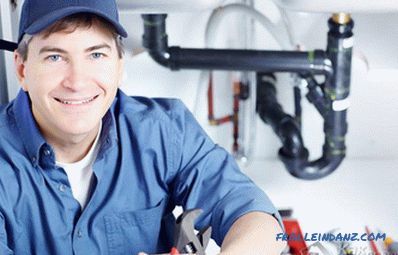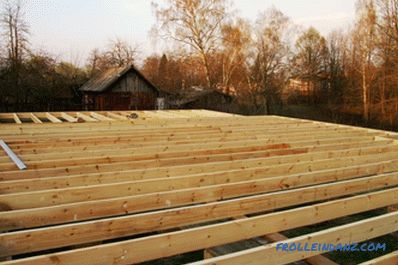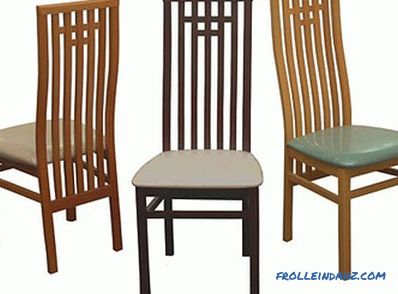Heating an apartment in the winter is costing us oh, how expensive it is, and the price of energy increases every year. And it is a pity when such a costly heat is uselessly leaving the apartment to the outside. Moreover, these losses are enormous. However, there is a good way to reduce them: sheathing the outer walls of the house with polystyrene foam, plates. This is familiar to all polystyrene characteristics in terms of thermal insulation is very remarkable. But are his other properties good? Today we will tell about it.

About the properties of expanded polystyrene - detail and available
First, let's look at the technical characteristics of expanded polystyrene, which really correspond to the given heater, later we will touch on those moments of its properties that are controversial, but are constantly promoted by sellers and manufacturers.
About thermal conductivity
Expanded polystyrene is nothing but a multitude of air bubbles enclosed in thin polystyrene shells. The ratio is as follows: two percent polystyrene, the remaining ninety-eight - air. The result is a kind of solid foam, hence the name - polystyrene foam. The air is sealed inside the bubbles, so that the material retains heat perfectly. After all, it is known that the air gap, which is without movement, is a magnificent heat insulator.
In comparison with mineral wool, the coefficient of thermal conductivity of this material is lower. It can range from 0.028 to 0.034 watts per meter per Kelvin. The denser polystyrene foam, the greater the value of its coefficient of thermal conductivity. So, for extruded polystyrene foam having a density of 45 kilograms per cubic meter, this parameter is 0.03 watts per meter per Kelvin. It is meant that the ambient temperature is not higher than + 75% 0 C and not lower than -50 0 C.
About vapor permeability and moisture absorption
Extruded polystyrene foam has zero vapor permeability. And the characteristics of foam polystyrene, which is made in a special way, are different. Its vapor permeability varies from 0.019 to 0.015 kilograms per meter-hour-Pascal. This seems strange, because, in theory, similar material with a foamy structure of steam is not able to pass. The answer is simple - foam polystyrene is molded by cutting a large block into slabs of the required thickness. So steam penetrates through the cut foam balls, climbing inside the air cells. Extruded polystyrene, as a rule, does not cut, the plates exit the extruder with a predetermined thickness and smooth surface. Therefore, this material is not available for steam penetration.
As regards the absorption of moisture, if you immerse a sheet of foamed polystyrene foam in water, it will absorb it to 4 percent. Extruded polystyrene, made by extrusion, will remain almost dry. It absorbs water ten times less - only 0.4 percent.
Video: Styrofoam breathes
About strength
Here, the palm belongs to extruded polystyrene foam, in which the bond between the molecules is very strong. The strength of static bending (from 0.4 to 1 kilogram per square centimeter) is noticeably superior to ordinary expanded polystyrene foam (its strength ranges from 0.02 to 0.2 kilogram per square centimeter). Therefore, in recent times, expanded polystyrene foam is being produced less and less, since it is less in demand. The extrusion method allows you to get a more modern material for insulation, durable and moisture resistant.
What polystyrene foam is afraid of
Polystyrene foam does not react to such substances as soda, soap and mineral fertilizers. It does not interact with bitumen, cement and gypsum, lime and asphalt emulsions. Nipochem him and groundwater. But turpentine with acetone, some brands of varnishes, as well as linseed oil can not only damage but also completely dissolve this material. Expanded polystyrene is also dissolved in most products obtained by the distillation of petroleum, as well as in some alcohols.
Just don't like foam polystyrene (neither foamed nor extruded) in direct sunlight. They destroy it - with constant ultraviolet irradiation, the material becomes at first less elastic, losing strength. After this, the work of destruction completes the snow, rain and wind.
Video: Polyfoam and acetone - chemical experience
About the ability to absorb sounds
If you need to escape from excessive noise, foam polystyrene will not help 100%. The impact noise is somewhat muffled in the state, but only under the condition that it will be laid in a sufficiently thick layer. But the air noises, the waves of which spread through the air, expanded polystyrene is too tough. These are the design features and properties of expanded polystyrene - rigidly located cells with air inside are completely isolated.So for sound waves flying through the air, it is necessary to put barriers from other materials.
About biological sustainability
As it turned out, mold on expanded polystyrene is not able to live. This is confirmed by American scientists, who in 2004 conducted a series of laboratory studies. These works were ordered by manufacturers of polystyrene foam from the United States. The result completely satisfied them.
The whole truth about the safety, incombustibility and long service life
Polystyrene is able to serve for many years without losing its properties - tests have shown that it can be defrosted and frozen several times, and the quality of the material is not suffers. This material is not subject to burning, as it consists of special substances - flame retardants. All this seems perfectly correct and undeniable, but only at first glance. There are several nuances. Let's talk about them further.
Environmental Issues
Unfortunately, polystyrene foam oxidizes on air. Moreover, the expanded polystyrene foam, which has a more loose structure, is more susceptible to this process. Extruded material oxidizes more slowly, but the same fate awaits it. The newly laid polystyrene foam also provides styrene, since the complete polymerization of the material is impossible at the production stage. And until the polymerization is completed, the allocation of styrene will not stop.
Manufacturers are trying to challenge the information about the harmfulness of polystyrene foam. They say their products are less harmful than wood. This refers to the release of wood harmful substances during combustion. Indeed, carbon dioxide, carbon monoxide and soot are formed during the combustion of polystyrene foam. But if polystyrene foam is heated to a temperature in excess of 80 degrees, then there is a release of vapors of harmful substances. They contain pairs: styrene, toluene, ethylbenzene, benzene and carbon monoxide.
Flammability issue
In fact, any polystyrene foam is on fire. Cunning producers, claiming that it fades on its own, being less dangerous than a tree - alas, it is not. Such a statement is clearly contrary to the Russian GOST 30244-94, according to which the combustibility of foams are classified as groups G3 and G4 - the most dangerous.
One of the ways to distort the facts is by effectively hanging the polystyrene foam plate in the air and then setting it on fire. To do this, the stove is operated from below with a lit burner. The result speaks for itself - only the piece that was in contact with the burner burns out, and then the fire does not go. But after all, this experience does not correspond to the actual operating conditions, and can only serve as a focus. But if you put a piece of expanded polystyrene on a plane of non-combustible material and set it on fire, it will not go out at all. After all, the heated drops of polystyrene foam, formed when a small piece is heated, will carry the fire to its entire surface. The result will not take long - the stove will burn completely.
If you take polystyrene foam, which does not include flame retardants, its smoke generation factor is 1048 square meters per kilogram. In expanded polystyrene with the effect of self-extinguishing, this figure is more - 1219 square meters per kilogram. For rubber, for example, it is 850 square meters per kilogram, and for a tree it is even less - just 23 square meters per kilogram. To make it clearer, let us cite the following figures: if the smoke in a room is more than 500 square meters per kilogram, then, stretching out your arm, you may not see her fingers.
Flame retardants (most often hexabromocyclododexane) are added to polystyrene foam to increase its fire safety. In our country it is common to designate such expanded polystyrene with the letter "C". This should, in theory, mean that the material has the property to attenuate independently. But in practice, it turns out that polystyrene foam with flame retardant burns no worse than not containing this additive. It only lights up worse, not doing this spontaneously at elevated temperatures. Its flammability class is G2, but after a few years it turns into G3 or G4 - the properties of the flame retardant deteriorate over time.
However, it should be noted that expanded polystyrene in building structures is never used in open form. On top of this material, facade plaster is always applied or a screed is mounted. Therefore, building structures, which include polystyrene foam are fireproof.
Question of service life
If it is correct to use polystyrene foam, covering it from above with plaster or another protective and decorative layer, it will last for 30 years, no less. However, in reality, everything turns out to be not so rosy - the masters blindly insulate heat insulation somehow, the customer will try to save at the expense of materials, then an inexperienced master of errors will make the installation of polystyrene foam plates.
One of these errors is the incorrect calculation of the thickness of the insulation.It seems to many that if you take a thick thirty-centimeter foam plate, it will last longer and will be warmer in the house. But this is not so - a material with a large thickness from temperature drops will go through cracks and waves, under which cold air will penetrate. It should be noted that in Europe the norm is adopted - to warm the houses outside with expanded polystyrene no more than 3.5 centimeters. thick This allows during a fire to reduce the risk of poisoning.
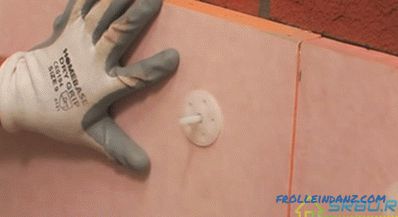
How to choose polystyrene foam correctly
Styrofoam is one of the most popular building materials. It is light, warm and cheap, and working with it is very simple. Since the demand is great, there are more and more offers from manufacturers. And each of them assures that it is his expanded polystyrene - the best, and the quality is beyond praise.
1. Being lost in the innumerable number of proposals, do not rush to buy material. First, carefully study its parameters. If you need to insulate the facade, take polystyrene foam PSB-S, positioned as self-extinguishing. His mark should not be below the fortieth. And if the brand has a number of 25 or less, then do not look in the direction of such material - it is only suitable for packaging, but not for construction work.
2. When buying a material, check by what standards it is made. If the manufacturer manufactures products not according to GOST, but according to its own specifications, then the characteristics of the material may differ. For example, polystyrene foam PBS-S-40 (fortieth grade) may have a different density - from 28 to 40 kilograms per cubic meter. In this way, it is beneficial for the manufacturer to mislead the customer - less money is spent on the production of lower density polystyrene foam. Therefore, it is impossible to focus only on the number in the name of the brand, and you should ask to show documents confirming the technical characteristics of polystyrene foam.
3. Before you buy, try to break off a piece of material from the very edge. If this turns out to be a low-grade packing foam, it will break with an uneven edge, on the sides of which round small balls will be visible. The material obtained by extrusion, on the site of a neat fracture has the correct polyhedra. The fault line will pass through some of them.
4. With regard to manufacturers of polystyrene foam, the best of them are the European firms "Polimeri Europa", "Nova Chemicals", "Styrochem", "BASF". Do not lag behind them and Russian manufacturing companies, such as Penoplex and TechnoNIKOL. They have a production capacity that is enough for the manufacture of expanded polystyrene of very high quality.
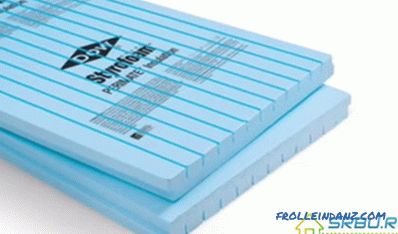
Conclusion
Although expanded polystyrene, as it turned out, combustible material and emit harmful substances when heated strongly, it remains one of the most popular heat insulators. After all, polystyrene foam has a lot of advantages as a heater: it is the cheapest, it is easily cut with an ordinary knife, it almost does not absorb moisture and keeps heat well. No wonder four out of five European buildings have exactly polystyrene insulation of the facade. And both houses, and offices, and industrial premises.
However, it is too early to talk about long-term studies of this material - even half a century has not passed since the beginning of its use. Therefore, those who talk about the service life of polystyrene foam for more than 80 years can confirm their words only with tests in the laboratory. But you shouldn’t completely believe them - after all, in order to get the desired results, you can send special samples to the laboratory.
The most important thing when using expanded polystyrene in the external environment is to securely cover it from the sun's rays and weathering. To do this, use a plaster mix, which includes cement. The coating should be applied tightly, there should not be a single lumen. Otherwise, a tiny sunbeam can eventually completely destroy the insulation.
But inside polystyrene foam it is not necessary to use for insulation, no matter what the manufacturers claim. Let them say, but in the event of a fire they will not be around, but the products of combustion can cause great harm, taking away health, and sometimes even the lives of people. An example would be the well-known tragedy in the Lame Horse club, where most visitors simply suffocated with the burning products of this heater.
Video: Styrofoam - the pros and cons of
